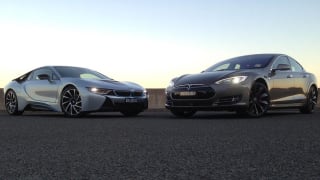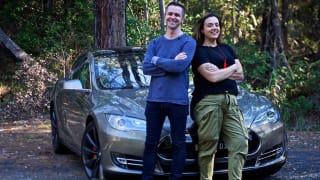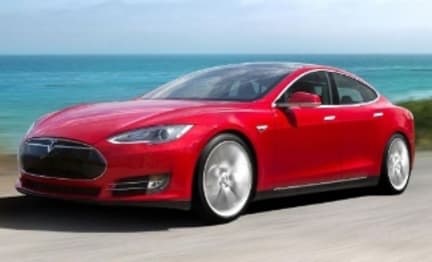
What's on this page
Tesla Model S 2015
Carsguide Motoring Editor Richard Blackburn had this to say at the time: The Tesla and i8 are fascinating, approaching environmentally responsible performance in very different ways. Both have their merits — and the mind boggles at what they could achieve in partnership.
You can read the full review here.The Tesla Model S is also known as the Code name: WhiteStar in markets outside Australia.
Tesla Model S 2015 News
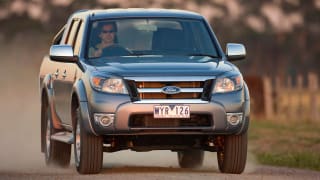
Ford, Audi, Tesla confirm affected Takata recall models
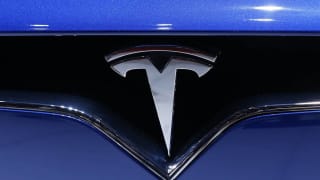
Autonomous car tech questioned after Tesla death
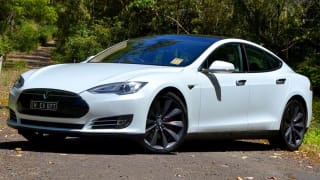
Tesla Model S recalled over seatbelt fault
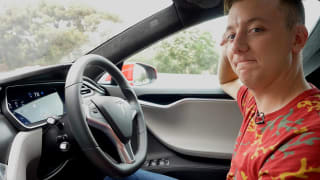
Behind the wheel of the autonomous Tesla Model S
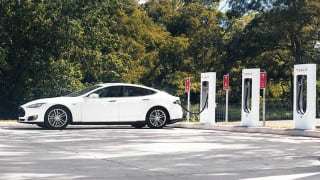
Tesla opens Supercharger stations in Goulburn and Wodonga
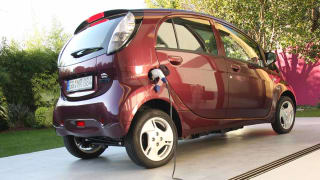
Electric car sales still a trickle in Australia
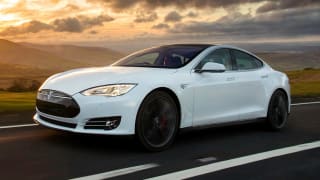
Tesla owners sound the charge
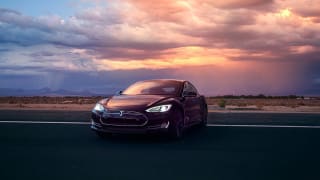
2015 Tesla Model S P85D revealed
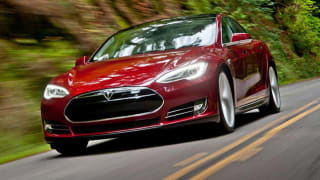
Tesla so safe it broke the crash test equipment
Tesla Model S 2015 Price and Specs
Pricing guides

| Tesla Model S | Body Type | Specs | Price from | Price to | |
|---|---|---|---|---|---|
| 60 | Hatchback | — Electric 1 SP AUTO | $49,830 | $57,310 | |
| 70D | Hatchback | — Electric 1 SP AUTO | $50,820 | $58,410 | |
| 85 | Hatchback | — Electric 1 SP AUTO | $54,890 | $63,030 | |
| 85D | Hatchback | — Electric 1 SP AUTO | $54,010 | $62,040 | |
Tesla Model S 2015 Q&As
Check out real-world situations relating to the Tesla Model S here, particularly what our experts have to say about them.
-
How do Tesla cars work?
It’s a popular barbecue or front bar topic of discussion: How do Tesla cars work? Fundamentally it’s pretty simple; they work like any other car, but they use an electric motor in place of an internal combustion engine. And instead of filling them with petrol, you recharge the batteries with electricity. There are other differences, too, but that’s the simplest definition of what is a Tesla, and the one that allows it to operate on fully renewable energy on some cases.
Tesla is a company founded by Elon Musk, the same guy that invented PayPal. So the company has plenty of money behind it. As well as cars, Tesla makes home storage batteries (for storing rooftop solar power) and is investing in all sorts of renewable technology and electrical components.
Over time, the Tesla cars product has evolved from a small sports car converted to electric, to clean-sheet designs for modern electric cars, SUV, pick-ups and even a semi-trailer than runs on electricity. But which ever Tesla you’re talking about, they all use a common philosophy.
That starts with a battery. In the case of Tesla’s current designs, that’s the latest lithium-ion battery tech. Connected to that is either a single electric motor or a pair of motors that power either the rear wheels or all four wheels respectively. Just like a slot car, you feed power to the electric motor and the car moves. Of course, a slot car doesn’t carry a battery, it picks up its power form the track it runs on, but even that could be a thing of the future for electric cars which might be able to wirelessly collect power through the road surface. It’s not as far off as you might think.
Other differences between a Tesla (and any other mainstream electric car) and a conventional car as we know it include bakes that recoup energy as the car slows (which is used to recharge the battery on the run) and the electrification of every system that is handled mechanically by a conventional car (brake boosting, power steering, heating etc).
Another major difference is that the Tesla drivetrain doesn’t feature multiple gears in its transmission. Because the electric motor offers maximum torque from standstill, the Tesla only needs one gear to achieve lots of acceleration and ample top speed.
The electric motor these days is a pretty neat piece of gear and is virtually maintenance free. It also has the potential to last a lot longer than an internal combustion engine. The batteries are also much better these days and as well as being vastly more energy-rich (their output per kg) they charge more quickly and battery life can easily be half a million kilometres. Some car-makers now offer a ten-year warranty on battery-packs. Tesla in Australia offers up to eight years battery warranty (depending on the model) but, crucially, up to 240,000km of cover guaranteeing that the battery will retain at least 70 per cent of its original capacity at that point.
Perhaps Tesla’s biggest claim to fame is that it took electric cars from golf carts to a product that was sexy and in demand. The company was way ahead of the curve in this regard, but now it seems the rest of the world is catching up, and the Tesla car has more serious competition now than it ever did.
Show more -
Where is Tesla made?
While the city of Detroit, Michigan is the cradle of the North American car industry, electric-car maker Tesla has always marched to the beat of its own drum. So even though it’s a US based entity, Tesla’s worldwide view and its inherent mould-breaking attitude means that its factories are in some interesting locations. But how many are there and in which countries?
Tesla currently has three giant plants across the USA, as well as a plant in China. Some of these plants make the Tesla cars we’re familiar with, while others are responsible for battery and solar technology production. Tesla is also building a fourth North American plant as well as a European gigafactory in Germany, while rumours of a second Chinese plant are also doing the rounds.
Given that Tesla cars are the brand’s most visible, recognisable products, the question usually revolves around where are Tesla cars made? In that case, the answer is the firm’s original gigafactory in Fremont (near San Francisco in California) which builds the Tesla Model S, Model X, Model 3, Model Y as well as components for other Tesla products. The original gigafactory in Fremont is a huge facility (as are all Tesla factories) employing something like 10,000 people. It was once the site of a General Motors manufacturing plant and then a Toyota/GM joint production facility.
The Shanghai plant in China, meanwhile, is the other half of the answer to 'where are Tesla cars built'. That plant produces whole cars, including the Model 3 and Model Y and is slated to produce the forthcoming Telsa Pick-Up which has been pushed back to 2022 at the earliest.
Tesla’s plant in Sparks, Nevada (Near Reno) is largely a battery factory with production of batteries for Tesla cars as well as its Powerwall home-storage battery. The Sparks plant is also a motors factory, producing the electric motors that power Tesla vehicles. The Tesla Semi (delayed but due soon) is also expected to be built at the Nevada plant.
Another Gigafactory is located in New York state, in the city of Buffalo. This concentrates on assembly of solar cells and modules as well as the superchargers that allow Tesla vehicles to be charged quickly in the field.
The factory under construction in the USA now is located at Austin, Texas and will be used to built the Model 3, Model Y and the Pick-Up. The new factory in Berlin, meanwhile, is very close to completion and will initially be used to build the Model Y.
Tesla has always been a brand surrounded by rumours, and these days, these seem to involve a second Chinese plant. The company has also established an Indian business unit, suggesting that a gigafactory on the sub-continent might also emerge.
Show more -
What electric car should I buy?
We can understand your feelings about the centrally-mounted screen in the Tesla, though you do get used to it surprisingly quickly.
As for the other models you’ve mentioned, we’ve had to get the crystal ball out to attempt to answer you!
The Polestar 2 will be on sale by the end of 2020, if all goes to plan. The company will be pushing hard to make that happen.
The VW ID3 is likely not going to be here until 2021, likely the mid or latter part of that year. It certainly has a lot of potential, and with pricing set to start below $50,000, it could well be The People’s (Electric) Car.
There are other options coming, though it depends on your diary and your budget.
You could consider the Tesla Model S, which may have been around for a while, but that also means it has a more traceable reliability history. It has a digital instrument cluster in the regular spot as well.
Have you looked at the Jaguar i-Pace? It has a claimed range of 470 kilometres, though it is on the pricey side of the equation, starting from about $125,000.
Indeed, a high price tag is a common theme among those EVs with big battery capacity and expansive driving range, because you’re basically covering the cost of the batteries with your money.
For instance, there’s the Audi e-tron quattro, which is due here in early 2020. That model will have a range of “more than 400 kilometres”, and - we suspect - a price tag above $120,000.
The Mercedes EQC is about to go on sale, too. Range for that mid-size SUV is pegged at about 450 kilometres, but again, you can expect a high price tag.
If 2021 isn’t too long to wait, there’s the Volvo XC40 Recharge coming then. Based on our previous experience with Volvo XC40s, it’ll be a great small SUV, with predicted range of 400km - though we think that’s understating it, because it has a 78kWh battery pack, and it has AWD too.
At the more affordable end - though admittedly still not quite meeting your expectations for range - there’s the very impressive Hyundai Kona Electric, which has a WLTP range of 449km, and a price tag of around $65k. It isn’t all-wheel drive though.
And MG is about to launch a real upstart in the segment, with the ZS EV hitting showrooms soon for $46,990 drive-away, albeit with a range of 262km. It’s also FWD only.
The Mini Cooper SE will also arrive in mid-2020, with pricing set to be less than $60k. But again, a range of 270km will likely rule it out for your needs, and its 2WD as well.
Another new small EV due next year is the Mazda MX-30. Pricing is still to be confirmed, and range isn’t great at about 300km. It’s FWD too.
In short, at this point in time - and out towards the end of 2020 - it looks like you’ll either need to spend a big amount of money on a premium EV to get the best range possible, or you’ll have to get used to the Model 3’s screen. You could always get an aftermarket head-up display fitted…
Show more -
What is the cheapest Tesla?
In March 2019 Tesla slashed their prices across both the Model S and Model X ranges. The cheapest Tesla is currently the Model S Standard Range with a list price of $115,600. Check out our news story for more info on Tesla's new prices.
Show more
Tesla Model S 2015 Dimensions
Dimensions for the 2015 Tesla Model S are dependent on which body type is chosen. The maximum width and height is 1984mm x 1445mm and can vary on the basis of model.

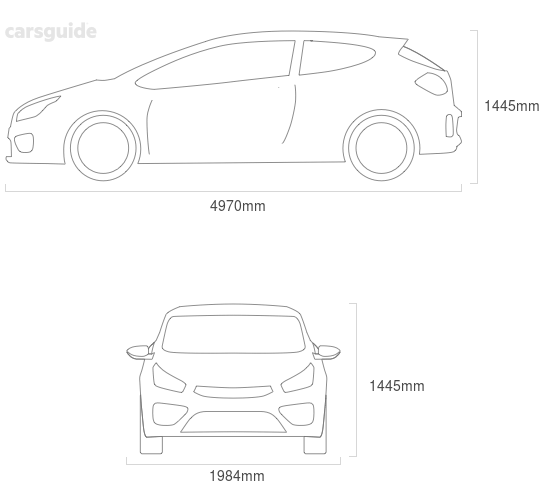
| Tesla Model S | Body Type | Height x Width x Length | Ground Clearance | |
|---|---|---|---|---|
| 60 | Hatchback | 1445x1984x4970 mm | 139 mm | |
| 70D | Hatchback | 1445x1984x4970 mm | 139 mm | |
| 85 | Hatchback | 1445x1984x4970 mm | 139 mm | |
| 85D | Hatchback | 1445x1984x4970 mm | 139 mm | |
Tesla Model S 2015 Wheel size
Wheel size for the 2015 Tesla Model S will vary depending on model chosen, although keep in mind that many manufacturers offer alternate wheel sizes as options on many models.The wheel size available will alter the range of tyres available to be fitted. Standard wheel sizes on the Tesla Model S spans from 19x8 inches.
| Tesla Model S | Body Type | Front Tyre Size | Front Rim | Rear Tyre Size | Rear Rim | |
|---|---|---|---|---|---|---|
| 60 | Hatchback | 245x45 R19 | 19x8 inches | 245x45 R19 | 19x8 inches | |
| 70D | Hatchback | 245x45 R19 | 19x8 inches | 245x45 R19 | 19x8 inches | |
| 85 | Hatchback | 245x45 R19 | 19x8 inches | 245x45 R19 | 19x8 inches | |
| 85D | Hatchback | 245x45 R19 | 19x8 inches | 245x45 R19 | 19x8 inches | |
Tesla Model S 2015 Fuel consumption
Fuel consumption for the 2015 Tesla Model S is dependent on the type of engine, transmission, or model chosen. The Tesla Model S is available with the following fuel type: Electric.
| Tesla Model S | Body Type | Specs | Fuel Consumption | |
|---|---|---|---|---|
| 60 | Hatchback | Electric,1 SP AUTO | — | |
| 70D | Hatchback | Electric,1 SP AUTO | — | |
| 85 | Hatchback | Electric,1 SP AUTO | — | |
| 85D | Hatchback | Electric,1 SP AUTO | — | |


